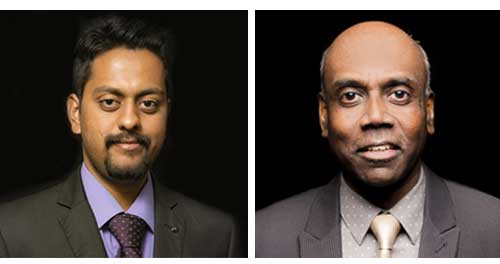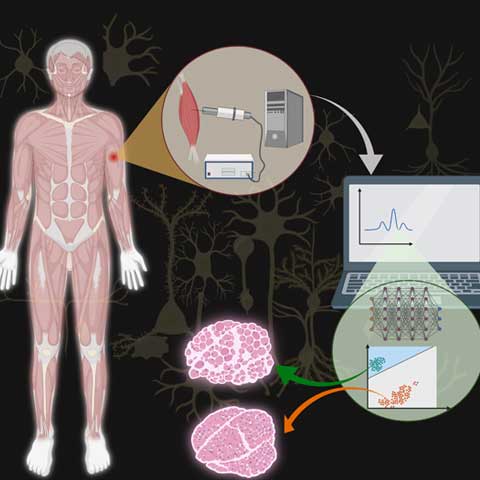New application of intramuscular electromyography may facilitate detection of neuromuscular disorders
Research team develops iEMG classifier framework for binary classification of signals for myopathy and neuropathy

research scientists in the Center for Mobility and Rehabilitation
Engineering Research at Kessler Foundation.
East Hanover, NJ. December 22, 2022. A team of researchers has developed a promising new approach to detecting neuromuscular disorders using intramuscular electromyography (iEMG). In a pilot study, the automatic diagnostic system showed high accuracy in three muscle types and low computational time. Their article, "Intramuscular EMG classifier for detecting myopathy and neuropathy" (doi: 10.1002/ima.22811), was published online on October 18, 2022, by the International Journal of Imaging Systems and Technology. It is available at: https://onlinelibrary.wiley.com/doi/abs/10.1002/ima.22811
The authors are Shobha Jose, Thomas George Selveraj, Jobin T. Philip, Sairamya Nanjappan Jothiraj, and Subathra Muthu Swamy Pandian from Karunya Institute of Technology and Sciences in Tamil Nadu, India, Kenneth Samuel of Eastern University in St. David’s, Pennsylvania, and Vikram Shenoy Handiru, and Easter S. Suviseshamuthu, from the Center for Mobility and Rehabilitation Engineering Research at Kessler Foundation in West Orange, New Jersey.
Invasive intramuscular EMG has been shown to be an effective tool for identifying neuromuscular abnormalities such as myopathy and neuropathy. Myopathy, a disorder of muscle fibers, and neuropathy, which reflects damage to peripheral nerves, exhibit different patterns of motor unit action potentials. To facilitate the interpretation of these signals, the team developed an iEMG classifier framework based on a new feature called 1-Dimensional Center Symmetric Local Binary Pattern (I-D, CSLBP), which enhanced the performance of a binary (myopathy and neuropathy) classification task.
The electromyographic signals from the biceps brachii, deltoideus, and vastus medialis muscles. Some of 25 individuals were studied: 10 healthy controls, 7 with myopathy, and 8 with neuropathy. Classification accuracy for the three muscle types exceeded 92 percent, and computational time was low.

processing iEMG signals for diagnostic purposes using
the proposed algorithm.
Created using biorender.com by V. Shenoy Handiru.
“This high level of accuracy combined with a short time frame for testing indicates the potential for real-time implementation,” stated Dr. Suviseshamuthu. “Future research is needed to test the feasibility of a real-time EMG system that would aid clinicians in making quick, objective, and accurate diagnoses of these neuromuscular disorders,” he added.
Relevant Resources:
Jose S, George, ST, Subathra, MSP, Handiru VS, Jeevanandam PK, Amato U, Suviseshamuthu ES. Robust classification of intramuscular EMG signals to aid the diagnosis of neuromuscular disorders. IEEE Open J Eng Med Biol. 2020 Aug 17; 1:235-242 doi: 10.1109/OJEMB.2020.3017130. eCollection 2020.
Suviseshamuthu ES, Shenoy Handiru V, et al. EEG-based spectral analysis showing brainwave changes related to modulating progressive fatigue during a prolonged intermittent motor task. Front Hum Neurosci, 11 March 2022, https://doi.org/10.3389/fnhum.2022.770053.
About Kessler Foundation
Kessler Foundation, a major nonprofit organization in the field of disability, is a global leader in rehabilitation research that seeks to improve cognition, mobility, and long-term outcomes, including employment, for people with neurological disabilities caused by diseases and injuries of the brain and spinal cord. Kessler Foundation leads the nation in funding innovative programs that expand opportunities for employment for people with disabilities.